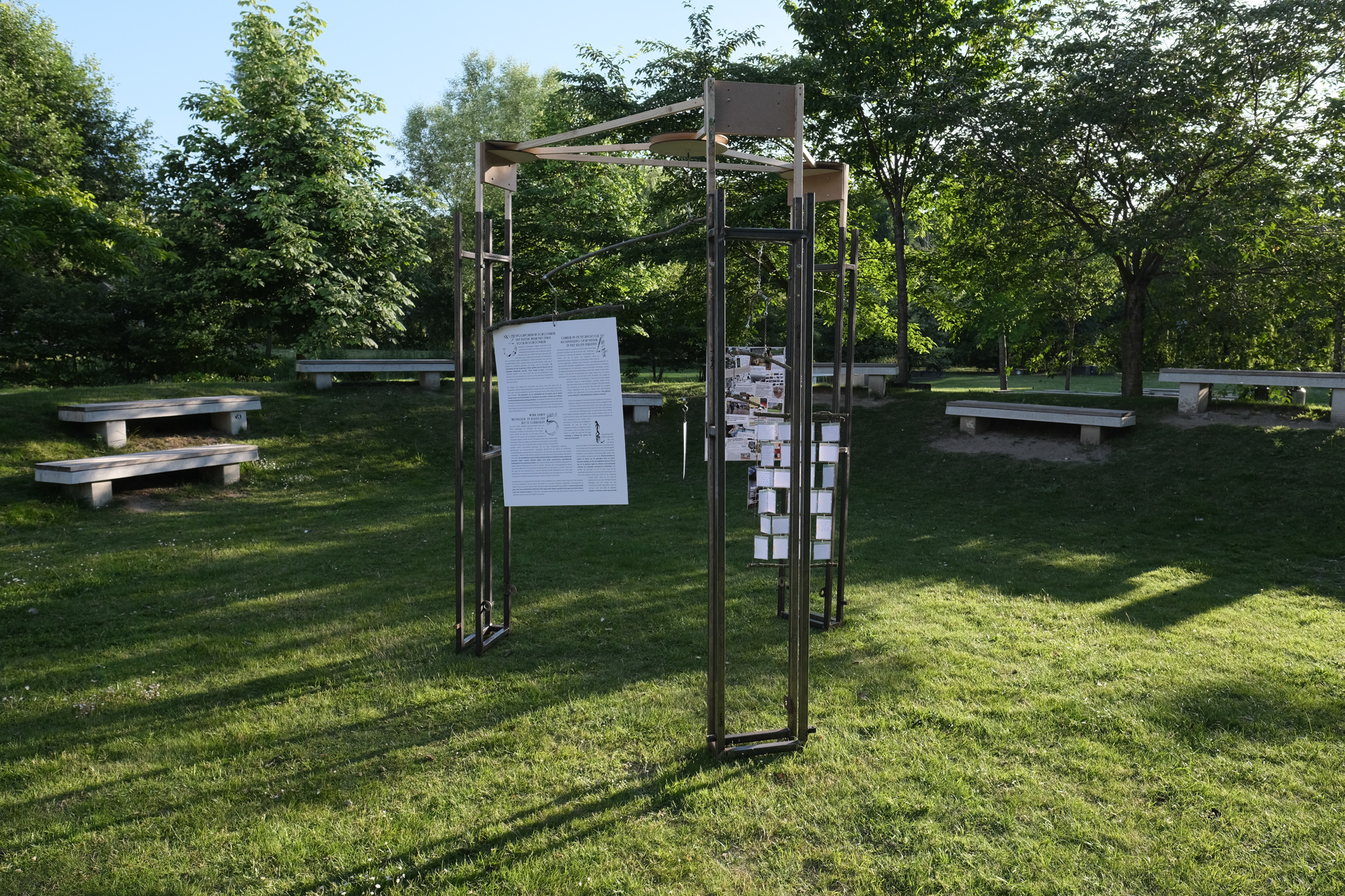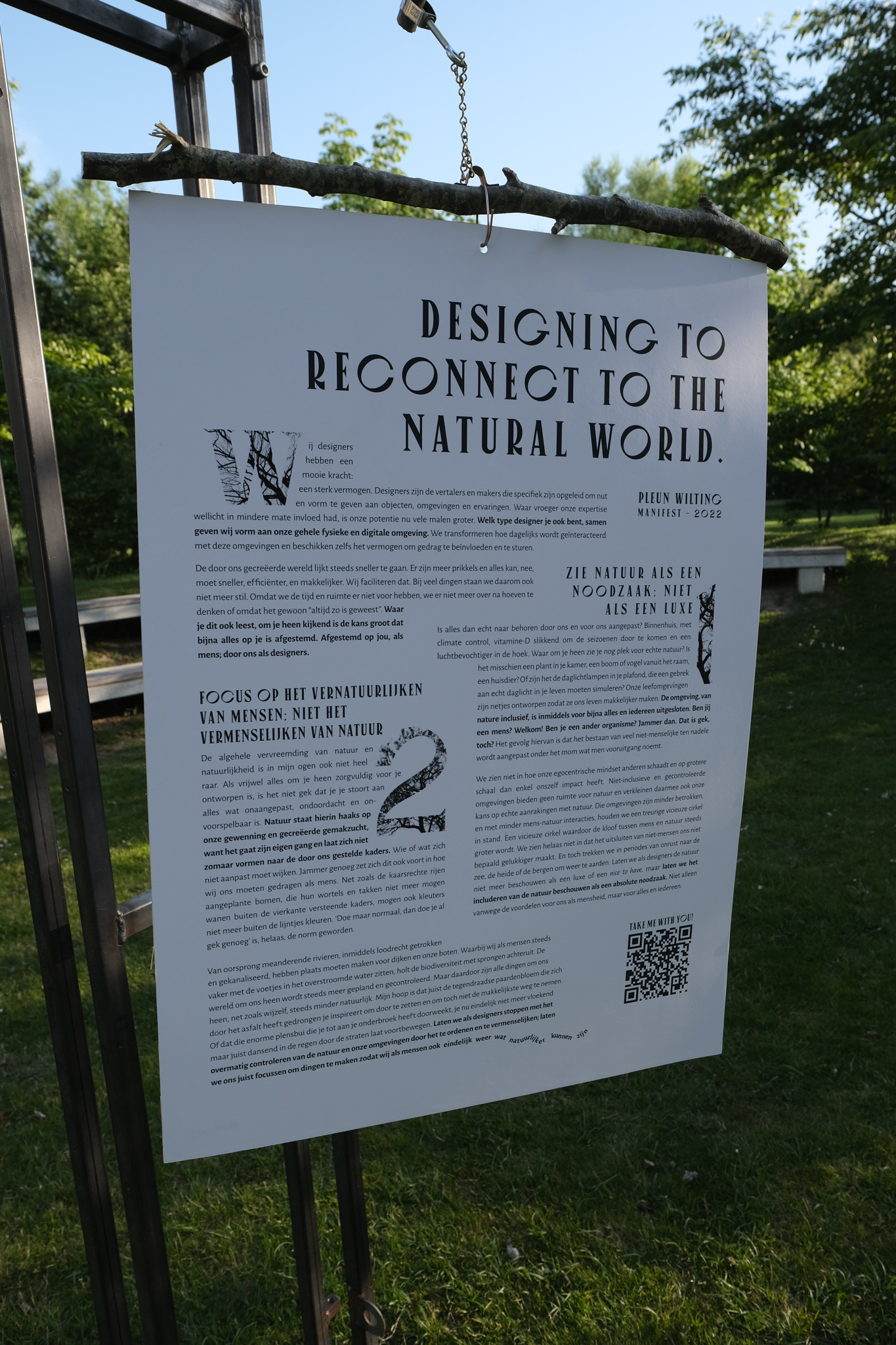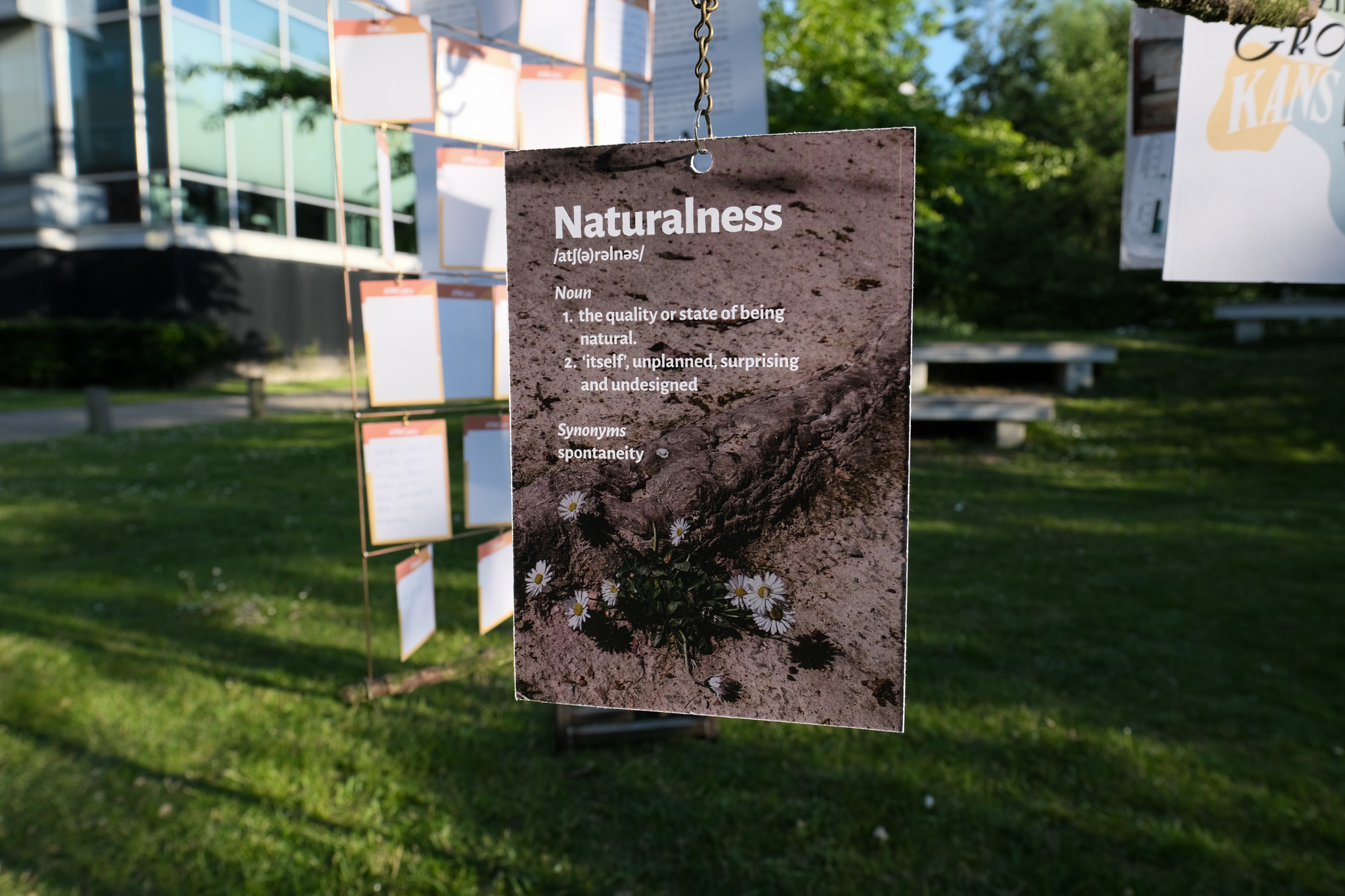We as designers have a great strength: a strong ability. Designers are the translators and creators who are specifically trained to give purpose and shape to objects, environments, and experiences. Whereas in the past our expertise may have had less influence, our potential is now much greater: Whatever type of designer you are, together we shape our entire physical and digital environment. We transform how people on a daily basis interact with these environments and even have the ability to influence and direct behavior.
The world we have created seems to be moving faster and faster. There are more stimuli and everything can, no, must be faster, more efficient and easier. We facilitate that. We don’t take the time anymore to stop and look around. Either because we don't have the time and space for it, we don't have to think about it anymore, or because it just "has always been that way". Wherever you're reading this, looking around, there's a good chance that almost everything is adapted to you. Adapted to you, the human being; by us designers.
Manifesto:
Designing to reconnect to the natural world
Klik hier om de Nederlandse versie te lezenDesigning to reconnect to the natural world is a written manifesto, incorporated in an interactive installation, about the role and part of designers in including nature and naturalness. It is rewitten towards us as designers, to make better and well-considered (design) choices, and to act more often from a more collective and inclusive mindset for not only us humanity, but also nature.

#1 See nature as a necessity, not a luxury
Has everything really been properly tailored by us and for us? Sitting indoors, with climate control on, taking vitamin D to get through the seasons with a humidifier placed in the corner. Where around you do you still see room for real nature? Could it be a plant in your room? A tree or bird from the window or a pet? Or is it the daylight lamps in your ceiling, which are supposed to simulate a lack of actual daylight in your life? Our living environments are neatly designed to make our lives “easier”. The environment, inclusive by nature, is now excluded for almost everything and everyone. Are you human? Welcome! Are you a different organism? Too bad. That's crazy, isn't it? As a result, the existence of many non-humans is being harmed under the guise of what one calls progress.
We fail to see how our egocentric mindset harms others on a larger scale than just ourselves. Non-inclusive and controlled environments offer no room for nature and therefore also reduce our chance of real contact with nature. Those environments are less involved, and with fewer human-nature interactions, we're perpetuating a sad vicious circle. A vicious circle that widens the gap between humans and nature. Unfortunately, we fail to see that excluding non-humans doesn't exactly make us happier either. In periods of unrest, we go to the sea, heathland or the mountains to ground ourselves again. As designers, let's no longer see nature as a luxury, or a nice-to-have, but let's consider the inclusion of nature as an absolute necessity. Not only because of the benefits for us as humanity, but for everything and everyone.
#2 Focus on naturalizing people,
not humanizing nature
The general alienation of nature and naturalness is not very strange, in my view. If almost everything around you has been meticulously designed, it is not surprising that as creatures of habit we get annoyed by all that seems otherwise. Nature is at odds to our lifestyle and planned convenience, because it goes its own way and will not change itself to fit the mold that we desire. But those who don't adapt, must give way. Unfortunately, this also extends into how we should behave as human beings. Just like the straight rows of planted trees, whose roots and branches are no longer allowed outside the straight and square stone borders, toddlers are no longer allowed to color outside the lines. 'Doe maar normaal, dan doe je al gek genoeg’ (‘Just act normal, that’s already crazy enough') has unfortunately become the norm.
Originally meandering rivers, have to make way for dikes and our boats, canalized into perpendicular unnatural systems. While we are up to our ankles in flooded water more and more often, biodiversity is declining by leaps and bounds. The world around us is increasingly planned and controlled. But that makes all things around us, just like ourselves, less and less natural. My hope is that the unruly dandelion that has penetrated the asphalt inspires you to persevere and not to take the easy road. Or the enormous downpour that soaks you down to the bone finally lets you move through the streets no longer cursing but rather dancing in the rain. As designers, let's stop dominating nature and our environments by ordering and humanizing it; let's focus on making things so that we as humans can finally be a bit more natural again.

#3 Incorporate the beauty of nature, but not just for the beauty
Aesthetics are important. In fact, according to research, the aesthetic quality of nature is one of the main motivators for its protection and preservation. You would rather watch a beautiful stretch of river where fish swim peacefully, with green riverbanks where butterflies flutter peacefully around the flowers, than a polluted canal where rusty bicycles color the water, dead fish are floating and seagulls are trying to swallow a plastic bag. The degradation of an environment is directly linked to the decrease in its determined aesthetic value. “From beauty to duty”. Extrinsic motivation perhaps, but if this is one of the main reasons for people to finally commit themselves to the conservation and protection of nature; I'd rather have people doing it for that, instead of just standing by and doing nothing.
As a designer, “use the beauty of nature, but not just for the beauty” may sound contradictory. However, unfortunately you see this all too often in practice, as for example companies that integrate this beauty just in order to be able to market it; only thinking about increasing their own revenue or image. Using the beauty of nature should serve the preservation and inclusion of nature instead of greenwashing. As designers, we can be inspired more often to integrate the beauty of nature. Not to pretend to be inclusive or ‘green’, but to show people the unmistakable splendor. To make people feel and experience again why preserving and including nature would be important to them.

#4 Use and see technology as a complement to nature, and not as a requirement
Nowadays the question posed by architect Cedric Price in 1966 is perhaps more relevant than ever: “Technology is the answer, but what was the question?” Technologies are unfortunately not necessarily green. The production, deployment, and extraction of raw materials for technology exerts pressure on all environments. Driven by innovation, human complacency, and seemingly infinite possibilities; implementing and improving technology has become the norm or priority. As with VR glasses for cows, where the digitally shown green landscapes should increase milk flow: Is that really the solution? Are there no other low- or no-tech alternatives? Just because we could, doesn't mean we should. Making technologies more efficient or greener is not the simple answer either. Because now, when our technology has often become more efficient with energy and resource consumption, we have created the illusion that below the line we ourselves are also more sustainable. As with the replacement of the incandescent light bulb with LED, the more energy-efficient image has contributed to the fact that we possess more and more technologies, while using them more intensively and simultaneously. Making our use, and therefore consumption, often anything but more sustainable.
For us designers, it is extremely important to determine whether high-tech is necessary to answer an issue. What is the scale and the extent to which the product will be used? How does the technology contribute to this? What is the impact that my deployment of technology has on non-humans and the environment? Sometimes certain needs can be better met with low- or no-tech, or even with nature itself. While in other cases, high-tech can be the best solution. Tricky, but that is precisely why it is important for us designers to think about the scale and possible positive and negative impact. Let's look for a balance and dwell more often on the question: “Technology is [always] the answer, but what was the question?"
#5 Collaborate with nature,
instead of just using it
On a daily basis, people are confronted with a lot of challenges and obstacles which we designers try to mitigate or solve. We can learn a lot from nature; by looking at how nature deals with similar challenges and obstacles, which can translate it into resilient designs. Why should we try to reinvent the wheel when nature has already done that during millions of years of evolution? For example, take buildings that regulate their own temperature, inspired by termite mounds. Airplanes inspired by birds, and more efficient windmill blades inspired by whale fins. They show us how nature is a leading example. Unfortunately, just using biomimicry doesn't make something nature-inclusive or friendly. The remaining green lands, blue waters and clear skies from which we draw inspiration often give way to gray masses of stone, tarmac runways and swinging blades. In addition, the use of living organisms in design can almost be called a trend nowadays. Driven by curiosity, organisms are used to create something aesthetic, innovative, and interesting. Unfortunately, what may look like a collaboration is often anything but. Our objectification of nature has made it an instrument. An instrument to achieve a desired and positive result for us, often to the detriment of others.
Using organisms as inspiration, or as co-designers, should serve to increase our appreciation for nature; not just to make our lives more efficient, easier, or more interesting. It should show us that a healthy cooperation is possible. Let's look for a symbiotic relationship, a respectful relationship where it is not just about taking, but also about giving. And who knows? Maybe we can find a specific answer if we learn to look and listen to nature again.
FFor quite some time everyone has been pointing at who should take the first step or who should do anything at all to work towards increasing our synergy with nature. It is high time that we as designers hold ourselves and our others accountable for our design choices and products. We are translators and makers in the service of the user, customer, and human beings. This gives us the perfect opportunity and role to speak out against the ethically irresponsibility’s of certain desires and needs. We have the ability to learn from and reflect on the potential impact that our work entails, and how it Affects our surroundings on a larger scale than just us as humanity. As a collective, let's think about how we can do our part to make a more inclusive world. Not just for us humans; but for everything and everyone. Design to reconnect to the natural world.
The PDF viewer below contains clickable links, displayed as small icons. For more information: Click on the small icons to go to the corresponding source
Note: The PDF viewer is unfortunately not available for mobile users: Use a desktop device to use the PDF viewer.












